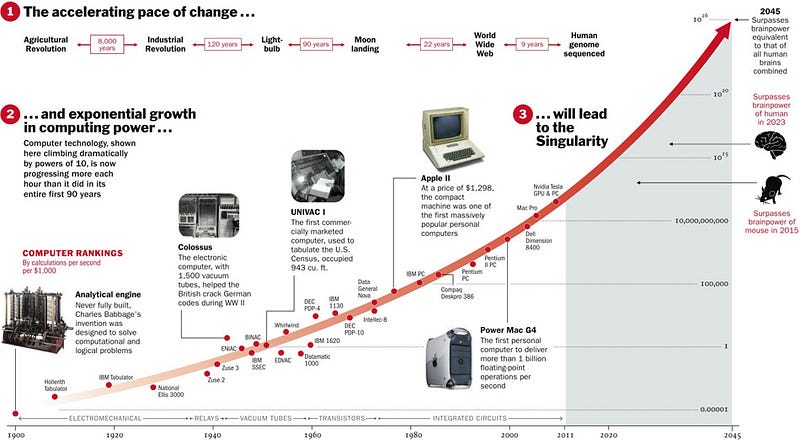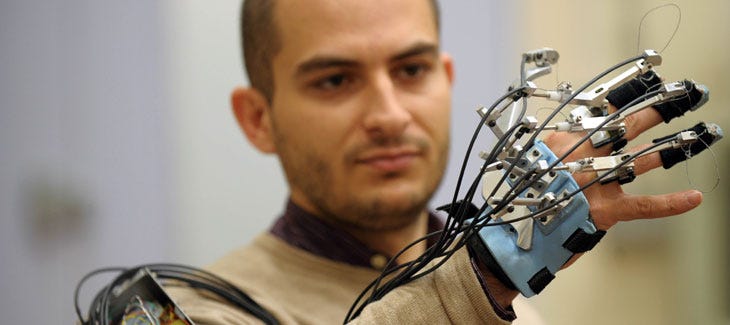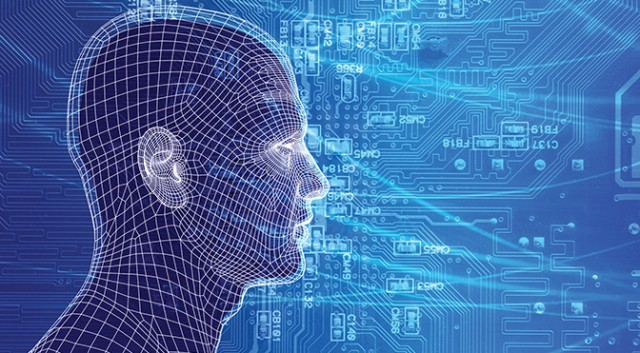Have We Reached the Limits of Human Understanding?
A look at how technology is far outpacing our ability to understand the natural world around us.
The death of a loved one brings unimaginable pain to the friends and family of the departed. In contrast, when one reads of the three million children who die of hunger each year, our brains gloss over the unimaginable figures. When that same statistic is shrunk down to one child dying of hunger every 10 seconds, the information is once again accessible to the human mind. The death of one individual remains a tragedy, but the death of millions becomes a statistic. Which raises the question, why can’t we emotionally connect with vast numbers with the same empathy and understanding as a data-set in the single, double, or triple digits?
At the scale of the universe, the numbers stretch to unfathomable proportions. There are about 400 billion stars in the Milky way, 100 billion galaxies in the universe and about 70 sextillion stars all together in the known universe. A sextillion is a one followed by 21 zeros:
1,000,000,000,000,000,000,000
Even more taxing to the imagination is the googolplex, 10^10^100, a number so large that according to astrophysicist Carl Sagan there is not even enough space in the known universe to write it out. There are more atoms in the universe (10^78) than there are zeros in a googolplex. The more information we gather about the universe and ourselves the more abstract the concepts become. To make sense of all these abstract figures scientists, like Carl Sagan, create analogies to put the information into perspective. For example, comparing the existence of the universe to a calendar; or the history of the Earth to an hour in which humans have only been in existence for a fraction of the last second before the clock strikes midnight.

The rational way of human understanding is to take knowledge that exists at the human scale and apply it to the infinitely massive or the infinitely subatomic. Ancient Greek mathematician Archimedes was confronted with a tough dilemma some 2,200 years ago. When King Hieron II of Syracuse had a jeweler make him a crown of gold, he suspected the jeweler had mixed cheaper silver in the crown and pocketed the rest of the gold for himself. Archimedes was summoned to investigate the composition of the crown without causing any damage to it. After a long period of dead ends, Archimedes came to an answer after observing the way his own body displaced the water splashing around in his tub. He had a second crown made of pure gold with the exact dimensions of the first one. Then, he placed both in water and measured the displacement of water for each, knowing that gold was denser than silver. Both crowns had different displacements and this confirmed the fact that the jeweler was stealing from the king. If the jeweler had made a crown of pure gold, the amount of water displaced by both crowns would have been the same.
Archimedes was so thrilled by his discovery in the bathtub that it is said he ran through the streets of Sicily shouting “Eureka! Eureka!” A Greek phrase meaning ‘I have found it.’

With the invention of computing power, more and more discoveries are being made by machinery, leaving humans to sort out and make sense of the information being mined. Sometimes, and increasingly so, the information gathered fits in with our understanding of the real world, but we do not necessarily know why. In 2009, a computer program named Eureqa was tasked with observing the seemingly chaotic behavior of a double pendulum and make sense of what it saw. Its creator, American robotics engineer Hod Lipson, asked it to find out what stayed constant in the pendulum’s swing. After about a day, Eureqa came up with Isaac Newton’s laws of motion –something the computer program was never programmed to know. Eureqa had discovered in a matter of hours fundamental laws of motion that had taken Newton years to figure out.
The program operated on “genetic programing” where random guesses at finding a solution that fits the data received are made. It then uses an algorithm that evolves and adapts to learn from every wrong answer until it finds a solution that expresses the data it has observed.
Lipson later received data from a biologist studying the metabolism of single celled organisms. When Lipson finished the data input, Eureqa produced a series of equations that didn’t make any sense but somehow fit the data received accurately. No one understood what the equations meant, but when plugged in with the data, everything checked out. Perhaps, the computer program had discovered something about the single celled organisms that not even the scientists could understand.
Data mining machines such as Eureqa have created a trend where new discoveries are made, but the scientists who employ these machines do not know the questions to the answers discovered. Simply put, the machine has no way of explaining itself and its findings back to humans. “The means of generating data far exceed our capability for analyzing it,” said Lipson during a conference at the Perimeter Institute in Waterloo, Canada. Science and the scientific method are being mechanized. Maybe in the near future it will be computer programs and robots that win the Nobel Prize. As we depend more and more on this technology, perhaps our last “Eureka” moments -like the one experienced by Archimedes 2,200 years ago- are endangered. Where the limits of human understanding begin, our technology begins to over reach. Lipson predicts that there could be a point where machines reveal new laws of nature that are impossible for us to comprehend. Remember all those vast numbers at the beginning of this article, we might not be as able to understand them as computers.
Concerning this concept, The New York Times wrote, “Theoretical physicists are not yet obsolete, but scientists have taken steps toward replacing themselves.”
It is easy to assume an “us vs. them” mentality when looking at the future of robotics and humanity, but the future may not be as bleak as you think. What comes next might just be a convergence between the biological and the mechanical. Computer power doubles every two years and grows exponentially according to Moore’s Law. To put into perspective what exponential growth looks like, try doubling one penny for 30 days. On the second day: two cents, on the third: four cents and so on. Exponential growth starts slowly but quickly builds up to vast amounts. By the 10th day: 5.12 dollars; by the 20th: 5,242.88 dollars; by the 30th: 5,368,709.12 dollars. In this same manner, technology has been gaining momentum since the invention of the typewriter.


This exponential growth is best illustrated in a 1991 Radio Shack ad. Every piece of hardware in this ad can now be found in one singular device –your smart phone. It contains more computing power than the spacecraft that landed man on the moon. The explosive growth of computer power will theoretically lead to a mind merge between human consciousness and computers in what is being called the singularity event. Futurist Ray Kurzweil who first started to map out the effect of Moore’s Law on technological progress predicts this event will happen in our lifetime around 2045 when 1,000 dollars buys computer power a billion times more intelligent than every human on Earth combined.
What emerges out of the 2040s according to Kurzweil is a postbiological civilization where human consciousness is no longer restricted to a biological vessel. According to Kurzweil, “Technological evolution is an outgrowth of–and a continuation of–biological evolution.” This does not mean that machines wipe out humanity, instead, a series of transitional phases or gradients will take place where humans will gradually begin to accumulate robotic modifications until the human body becomes obsolete.

Interesting things begin to happen in a theoretical postbiological society. First, since computers are highly susceptible to overheating and radiation, these societies on Earth would migrate out towards the outer edges of the Milky Way in order to escape the radiation and high temperatures of the galactic center. Second, these societies will mine the galaxy for heavy metals needed to self replicate. Just like there is a habitable zone for biological life to form in our solar system, a “Galactic Technological Zone” exists on the outer edges of the Milky Way where cool temperatures and an abundance of metals make it a prime location for the existence of non-biological life. Theoretically, as we exist as information, the concept of time will be obsolete. Our digital selves would be able to colonize the galaxy and later the universe traveling as information between universal destinations.
It might seem a bit far fetched, but these predictions are made plausible by the current exponential growth of computers. The field of technology does not gradually advance from year to year. Just like doubling a penny for a month, what we know and do with technology in a century by today’s standards will be the equivalent of one hours worth of discoveries in the future.
Substance is a publication of the Mt. San Antonio College Journalism Program. The program recently moved its newsroom over to Medium as part of a one-year experiment. Read about it here.







